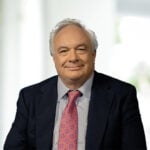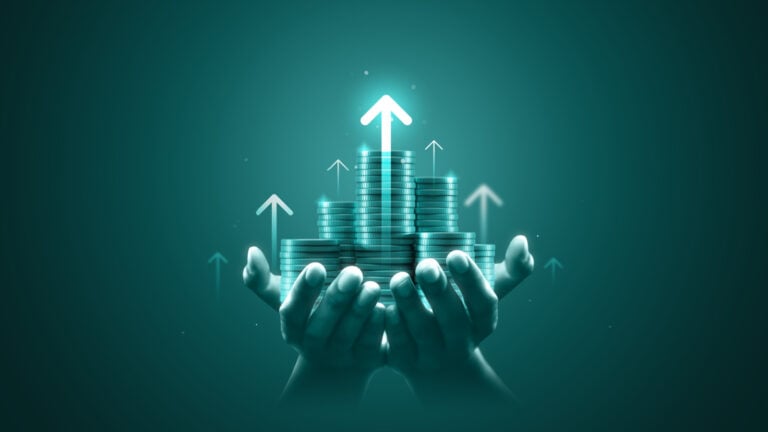The “melt-up” since the April 8 lows has been beyond phenomenal.
Ever since the initial fears surrounding President Trump’s April 2 tariff announcement began to subside, it has been off to the races.
As of this writing, the NASDAQ has soared 38%, the S&P 500 is up 28%, the Russell 2000 has gained 29% and the Dow has risen 19%.
As a result, the stock market is now on the verge of five straight months of gains. That’s unprecedented, folks.
Normally, the stock market would back and fill a bit after such an impressive run. But it hasn’t yet.
It’s especially puzzling since we’re in the middle of August – one of the weakest periods of the year, from a seasonal perspective.
September is historically a weak month for the market, too. So, stocks could take a breather then. But, as I mentioned in Tuesday’s Market 360, if the Federal Reserve cuts key interest rates as expected, all bets are off.
So, yes, this “melt-up” isn’t normal. But the reality is there are several reasons to remain optimistic for the rest of the year.
That’s because the U.S. is about to shift gears and enter a period that I like to call “economic nirvana.”
So, in today’s Market 360, I’ll give four reasons explaining why the conditions are ripe for a period of incredible growth. Then, I’ll tell you about one of the best ways to profit…
Reason No. 1: Renewed Optimism
First, there is renewed optimism after President Trump secured new trade deals.
Many of the U.S.’s trading partners, including Japan, Indonesia, the Philippines, South Korea and the European Union, secured trade deals ahead of the Trump administration’s latest deadline.
China, Mexico and Canada are still expected to negotiate new U.S. tariffs. President Trump gave Mexico a 90-day extension to allow more time for negotiations, and there has been some progress on the rare earth discussions with China.
Recently, Trump gave another 90-day pause on higher tariffs on Chinese goods that will go into early November.
Bottom line, tariff uncertainty is diminishing, and folks can begin to cheer up.
Reason No. 2: Moderating Inflation
The second reason is that inflation is moderating. Despite persistent attempts to derail the Trump administration’s economic agenda, economic growth without inflation is fully anticipated.
There are a few reasons why I don’t expect inflation to materialize:
- An improving U.S. dollar
- Widespread deflation in China
- Lower energy prices from “drill, baby, drill”
- Imports only account for 14% of inflation calculations
Prior to last week’s reports, inflation had come in below economists’ expectations for the past five months. But in my opinion, it didn’t actually reveal many recurring inflation concerns. (For my full thoughts, check out my in-depth report here.)
So, because of the four aforementioned factors, as well as artificial intelligence and productivity, inflation will be suppressed.
Reason No. 3: An Accommodative Central Bank
Personally, I was disappointed that the Fed didn’t cut key interest rates at the July Federal Open Market Committee (FOMC) meeting.
In the wake of the meeting, Fed Chair Jerome Powell said the slowdown in growth “largely reflects a slowdown in consumer spending.” That was the only dovish statement. So, expectations for a September rate cut remain high, but it is not yet certain.
Recent developments signal that it is growing more likely – like the fact that the Labor Department cannot effectively count payroll jobs. The May and June payrolls were revised lower by a cumulative 258,000. This is not the first time this has happened, but it is the biggest one I can remember in a while. So, clearly, the seasonal adjustments that the Labor Department likes to use are outdated.
What’s more, officials such as Minneapolis Fed President Neel Kashkari have said the data in hand clearly shows the economy is slowing, and that it may be appropriate to start adjusting the federal funds rate.
As a result, there is a growing number of Fed officials who want to see a rate cut.
You may recall that both Christopher Waller and Michelle Bowman voted against holding rates steady. Also, Fed Governor Adriana Kugler didn’t attend the FOMC meeting due to a personal matter, and she has since announced her resignation. President Trump selected Stephen Miran, Chairman of the Council of Economic Advisers, to replace Kugler’s vacated seat, which makes up our third official.
I should add that Treasury yields have declined lately, so falling market rates will also continue to pressure the Fed to cut.
Reason No. 4: Lower Trade Deficit Boosting Economic Growth
Despite all the fears surrounding the Trump 2.0 tariffs, it’s becoming clear that a lower trade deficit is boosting U.S. economic growth.
The Commerce Department recently announced that the U.S. trade deficit came in at $60.2 billion, which was better than economists’ estimate of $62.6 billion and substantially lower than May’s trade deficit of $71.7 billion. Imports plunged 3.7% to $337.5 billion in June, while exports declined by 0.5% to $277.3 billion.
Just so you can see how erratic imports to the U.S. have been, just look at the chart below:

The fact is, the inventory glut from the first quarter persists, so it’s imperative that tariffs be finalized and stop distorting GDP calculations.
I should also add that the onshoring that President Trump is pushing in the tariff negotiations is anticipated to bring $10 trillion to the U.S. Most of this onshoring is tied to automotive suppliers/manufacturing, semiconductors and drug manufacturing.
As a result, 5% annual GDP growth is very possible in the upcoming years.
What It Means for the Market
Here’s the bottom line: The past four months have not been a fluke.
I want you to pinch yourself, because this is real.
In fact, it is very possible that we are entering a period of “economic nirvana” – where all of the conditions align to create a period of incredible growth.
Like I said, we could even see 5% GDP growth – not for a long time, but it is possible.
And before you laugh at the possibility, I’ve got two words for you: peace dividend.
You may recall what happened after World War II ended. It was a time of unprecedented growth and prosperity.
Or more recently, in the 1990s, after the end of the Cold War. All of a sudden, the world breathed a huge sigh of relief, giving the market a major boost and an even bigger rise in sentiment – not to mention the Internet boom.
If the ongoing war between Russia and Ukraine can be brought to an end, that would be a huge step toward creating a peace dividend.
We already know that the Trump administration has facilitated a renewed dialogue between the two countries. Frankly, the speed at which this is happening is a little surprising.
But if this can be pulled off, then a peace dividend may very well be possible.
It’s hard to overstate how big of a deal this would be. And it would provide a major boost to the market.
How to Profit From the Growth Ahead
If you think back to the 90s, you may recall that it was a period of incredible innovation and optimism – not to mention profits for investors.
But here’s the thing…
History shows that every major tech revolution generates at least three times more value than its predecessor, a phenomenon called the Tech Rule of Three.
- The personal computer era marked the first big leap…
- The internet followed, producing over 3.5X the value of PCs…
- Mobile than tripled the internet’s gains….
- Cloud computing tripled mobile’s….
If you think about it, it makes perfect sense. That’s just how innovation works – it builds on what came before, and it compounds progress into a shorter and shorter timeframe.
That’s where we’re at today with artificial intelligence. AI can be used to enhance older technologies such as cars (self-driving vehicles), PCs (AI PCs) and smartphones (personal assistants).
But that’s just the beginning. Because Phase 2 of the AI Revolution will be all about Physical AI. This is where AI steps out of its virtual world and into the real one.
We’re talking about humanoid robots, automated factories, self-driving cars and more.
And if we learned anything from AI, the speed of its development will come in the blink of an eye.
That’s why I sat down with my InvestorPlace colleagues Eric Fry and Luke Lango in an exclusive briefing.
Simply put, we think physical AI could spark an economic wave beyond epic proportions. And we want you to be one of the first to know about it before everyone else and give you the keys to profit from it. (We even reveal a free stock pick just for watching.)
Sincerely,

Louis Navellier
Editor, Market 360

